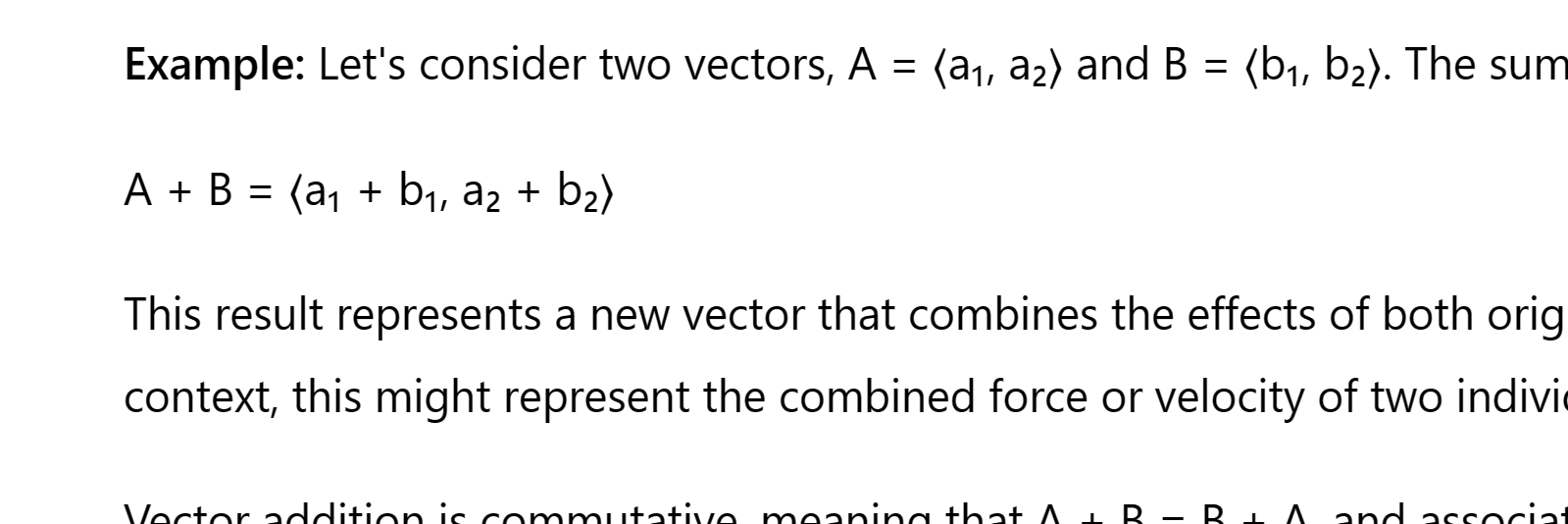Vector Addition: Combining Forces and Directions
Vector addition is a mathematical operation that combines two or more vectors to form a new vector. It’s a process that adds corresponding components of the vectors, capturing both the magnitude and direction of the combined effect.
Example: Let’s consider two vectors, A = ⟨a₁, a₂⟩ and B = ⟨b₁, b₂⟩. The sum of these vectors is given by:
A + B = ⟨a₁ + b₁, a₂ + b₂⟩
This result represents a new vector that combines the effects of both original vectors. In a physical context, this might represent the combined force or velocity of two individual forces or velocities.
Vector addition is commutative, meaning that A + B = B + A, and associative, meaning that (A + B) + C = A + (B + C).
Understanding vector addition is essential in various fields, including physics, engineering, computer graphics, and more. It’s a tool that helps us model and analyze the world around us, capturing the interplay of forces, directions, and magnitudes.

